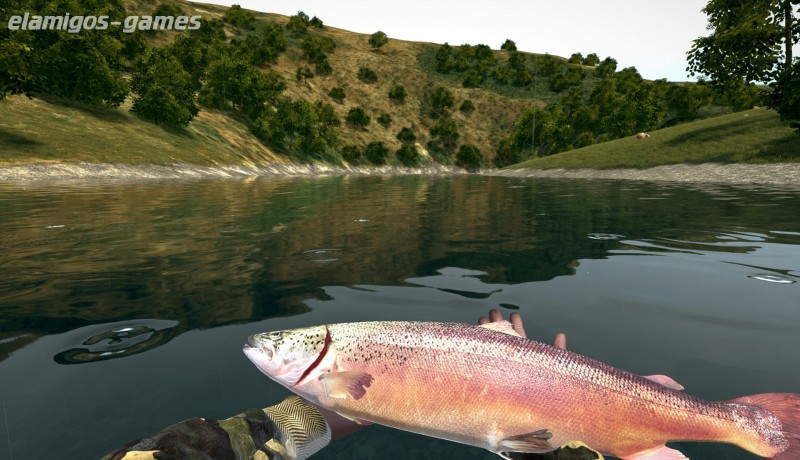
With a classic trout fly pattern, it imitates stoneflies or mayflies. Prince nymphs are skilled at drawing in fish no matter what the weather. It’s especially effective in muddy, high waters. It can easily be tied in a variety of colors and weights in just a few minutes. It is simple to tie, made of a single piece of chenille and a hook. The San Juan Worm is a simple, effective way to fish for trout with worms. San Juan Worm: for use in the murkiest waters

San juan worm, prince nymph, crayfish, black stone fly 9. Fish will naturally strive to eat eggs because they are heavy in protein and other nutrients–plus, they’re easy to target as they don’t fight back! Egg flies can be tied using simple egg yarn (such as Glow Yarn) or with impaling beads. The reason why these flies work best during spawning is because this is the time of the year when there are other loose eggs from competitors hanging about in the water.

Eggs: don’t knock’em till you try’emĮgg patterned-flies aren’t ideal for all situations, but work well during steelhead spawning season, or for trout or salmon fishing. Wherever you live, you are almost guaranteed to encounter the live, actual version of this insect–so make sure you have its replica on hand to land some monster trout. These flies usually hatch in mid-morning on cloudy days and work well in slower currents along banks. There are many flies that represent these species (such as the aforementioned Pheasant Tail nymph and the Parachute Adam) but this fly is more simple to use and a must-have in your dry fly box. Especially from September to November, you should always carry Blue-Winged Olives, as these are one of the most abundant hatches during that time of the year. The Blue Wing Olive is a simple yet effective dry fly that imitates one of the most common insects in the world’s waters. It can be used as a dropper fly to increase trout-fishing success.

The bead head on this nymph helps to drive the fly below the surface of the water quickly. It can be made out of dyed hair and synthetic fibers, making it imitate just about anything you want it to if you’re crafty enough to tie your own flies. It can also be used to imitate damselfly nymphs or even stonefly nymphs. Many people use this fly to imitate a caddis larva case or a mayfly. It moves into the feeding zone rapidly, making it a good choice for calm waters. This productive fly imitates a wide range of insect species. Bead Head Hare’s Ear Nymph: won’t limit you to one type of insect Hares ear nymph, caddis nymph, blue wing olive, egg flies 5. It is best used for trout, but also has success with smallmouths and panfish. That being said, this fly can also be used on calmer waters, as it can catch some serious air before touching down lightly on a lightly rippling surface. The hackle and elk hair wing of this dry fly allow it to bounce along the waters surface instead of becoming waterlogged. It imitates emerging caddis trying to leave the surface of the water. It is a highly mobile fly, skittering along the surface and creating enticing movement that is highly tempting to fish. This tan, gray, or black fly is an excellent pick for turbulent waters, with a hackle body that allows the fly to avoid getting dragged under. Elk Hair Caddis: for when the waters aren’t so calm It can be tied with several strands of tinsel or with a metal cone head to make it flashier and heavier, but the unweighted and unadorned version is more popular.

It has a specific pulsating action and, when purchased in various sizes and colors, can attract several species of fish. It is an older variety of fly, but combines all the right moves with the best profile for catching tons of fish. The wooly bugger is a traditional fly that works well for catching trout and several other cold-water species. This makes it a great option when fish are feeding unpredictably, or if you’re not entirely sure what they’re feeding on in a new area you have not fished yet. It can imitate a variety of small flies, such as mayflies, but can also imitate a Caddis fly. It is visible even in bright sun or dim light, and rises quickly. It’s easy to cast and easy to see, with a bright white post and dark body. This versatile dry fly is a popular choice on rivers throughout the world. Parachute Adams: versatile and attractive It’s not a flashy tie, but it mimics a wide variety of bait species and has an established reputation for catching loads of fish. This fly is easy to tie at home for beginning fly-tyers, as it can be kept slender and made out of natural materials. With a dark brown color and slim shape, it is deceptive in its imitation as a mayfly and moves quickly in the water. This fly is the quintessential mayfly imitator. Pheasant tail nymph, parachute adams, wooly bugger, elk hair caddis 1.


 0 kommentar(er)
0 kommentar(er)
